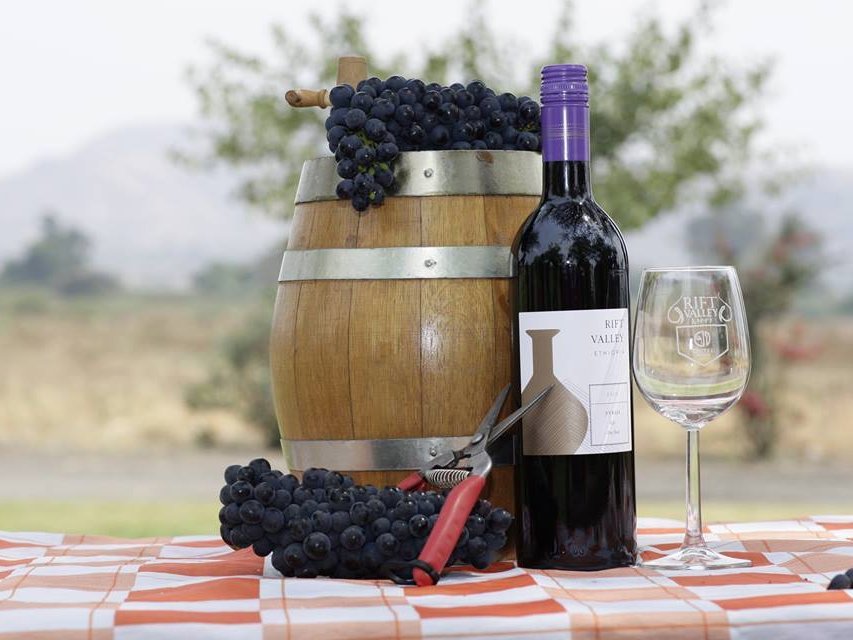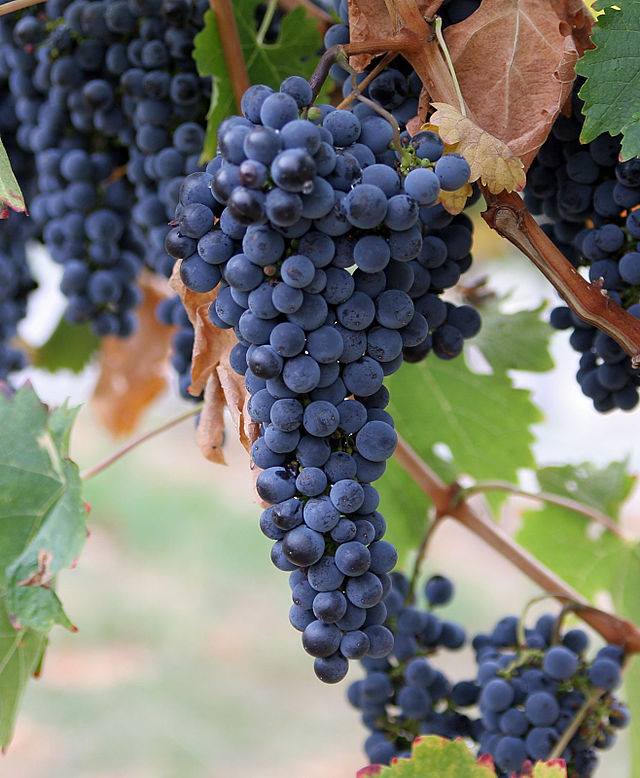
Grapes and wine were already well known in Ethiopia around the first century A.D. when they were first imported through the Red Sea Port of Adulis. Afterwards, Ethiopians started brewing traditional fermented beverages from locally available raw materials to provide their guests. Ethiopia has been making a local wine called tedj, or Ethiopian mead, a honey wine flavored with an indigenous herb much like hops that remains the most popular alcoholic beverage in Ethiopia. However, this ancient wine-making tradition is now coexisting with a modern form of wine-making. Ethiopia is growing its own grapes and producing its own standardized high-quality wines.
A growing local demand
The production of modern winery in Ethiopia first started when Awash winery, the oldest winery in Ethiopia, was established in 1956. Awash Winery – which is run by local entrepreneur Mulugeta Tesfakiros – owns more than 117 hectares of a wine estate and has an annual production capacity of about 10 million bottles, most of which is exclusively sold on the Ethiopian market.
In 2014, Ethiopia’s annual wine consumption was around one million litres, six times lower than Kenya’s. But this reality is slowly changing, as wine has become more popular in recent years. The annual wine consumption in Ethiopia is expected to grow to more than 8.5 million litres per year. As the local demand for quality wine is at an all-time high, Awash is speeding ahead with a capital expansion project to increase the winery’s production capacity to an annual of 20 million liters by 2020 through an expansion of the vineyards and farming mechanisation. New vines have been planted on a 100 ha plot, which doubles the company’s cultivated farm land. This production capacity increase allows the company to look into export opportunities. In the coming 18 months, the company plans to begin exporting its product. This success has attracted new players to engage in the country’s young wine sector.
New players and local incentives

In 2007, Prime Minister Meles Zenawi invited Pierre Castel, founder of French beverage giant Castel, one of the largest wine and beer producer in the world, to assess the opportunities for vineyards in the country. A year later, the company imported different grape varieties and began setting up its vineyard in Ziway spreading across 120 hectares, 163 km south from the capital, Addis Ababa. When sales began in 2014, customers rapidly fell in love with Castel’s products and locally produced wines are now preferred to imported ones. Today, Castel manages a 162-hectare vineyard and produces about 1.4 million bottles a year − with over half exported to China, the US and Australia.
Several factors explain this success. First, Ethiopia’s geographic location and climate. Castle’s vineyards have an annual rainfall of about 650 mm, an average temperature of 25 degrees Celsius per year and sandy soils, which are ideal conditions for the development of quality wines. Due to Ethiopia’s proximity to the equator, it is even possible to make two harvests per year. In addition, local wine consumption is growing in Ethiopia, although starting from a low base. Locally-produced wine can be found in the new supermarket chains appearing around the country, as Ethiopia’s economy continues to grow. A significant portion of Castel’s exports are targeted at Ethiopian restaurants, of which there is a growing number globally.
Third, wineries based in Ethiopia benefit from several tax incentives such as the AGOA programme supporting free access to US market or the EU’s Everything but Arms (EBA) programme, which provides a duty and quota-free access to the European markets. Some regional states in Ethiopia have also provided investment incentives for this sector, in order to further support the development of wineries. Finally, the Castel group employs organic farming method in accordance to Ethiopia sustainable development policies, a promising method as the consumption of organic wine has out-paced growth in the consumption of non-organic wine.
Conquering the Global market

Awash’s winery range consists of four wines: A white and a red, made from the grapes from Awash vineyard: Kemila Medium Dry White 2013, a slightly sweet white, mainly from Chenin blanc (80%) and Grenache Blanc and Axumit Sweet Red Wine 2013, a blend of red Grenache (60%), Sangiovese, Petite Syrah, Gamay, Nebbiolo, Dodoma and Tinta Amarela. This is the most popular Ethiopian wine with a nose of red fruit and a great acidity. Two resinous wines complete the collection: Awash White wine 2014, a Méthode Cap Classique (MCC) sparkling wine made from 100% Chenin Blanc and Gouder Red Wine 2013. A peculiarity at Awash is that they constantly recycle wine bottles, thus we could find old bottles, 40 to 50 years old, on the market. A great environmental initiative.
Castel for its part has two brands, Rift Valley and Acacia. While the Rift Valley wine is targeting more experienced wine drinkers, foreigners and high-end restaurants, its Acacia range (with four different blends) is aimed at an emerging Ethiopian wine-drinker who tend to prefer sweet et fruity wines. Castel’s wined ranges seven different types of products, two white wines and five red wines. Merlot, Syrah and Cabernet Sauvignon grapes were chosen for the reds while Chardonnay grapes were chosen for the white wines. Acacia Medium sweet white 2013 is a 100% Chardonnay with a taste of banana and white flowers. Acacia Medium sweet red 2013 is a blend with equal proportions of Cabernet Sauvignon, Sangiovese and Syrah, which is very popular and appreciated by Ethiopian palates. Acacia Dry red 2013 has the same blend in a dry version, with intense black fruit flavours. The premium range of the Rift Valley are for their part wines partly aged in French oak barrels. Rift Valley Chardonnay 2013 is a fresh white wine with peach and citrus aromas. Rift Valley Merlot 2013 is red a crunchy wine full of red fruit and wood softened tannins. Finally, Rift Valley Cabernet Sauvignon 2013 is a well-made, more powerful structured wine. With such a diverse and promising range, it is easy to understand why the Castel group bet on Ethiopia’s vineyards, and their belief that Ethiopia has the potential to rival the continent’s main wine producer, South Africa in a few years.
For more information
Solomon Dilbaba, “Wine-Making in Ethiopia – Cultural, Historical and Economic Significance”, The Ethiopian Herald, 12 May 2016
Kate Douglas, “Ethiopia’s emerging wine industry luring consumers locally and abroad”, How we made it in Africa, 13 December 2016




